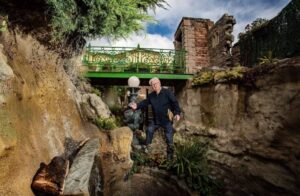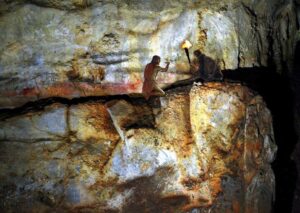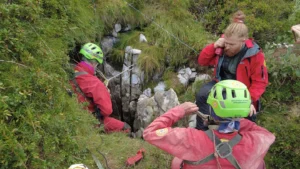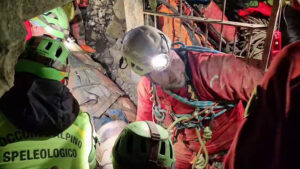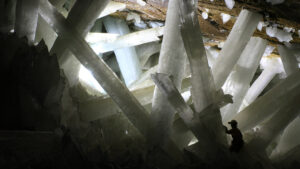In the early afternoon of November 6, 2021, 38-year-old George Linnane of Bristol took a 15m fall in Wales’s Ogof Ffynnon Ddu cave system. He suffered a broken leg, sternum, and cracked jaw — serious but not life-threatening blows.
But extracting him from the UK’s deepest cave would prove slow, technically challenging, and exhausting. Located in Brecon Beacons National Park, Ogof Ffynnon Ddu reaches 274m below ground and is 50km long.
UK cavers to the rescue
His partner quickly summoned cave rescuers. Steve Thomas’s team, the first on the scene, knew that they’d need all the backup they could get. In a statement to the BBC, the Derbyshire Cave Rescue Organization explained the difficulty:
Moving through a section of passage for an uninjured, fit caver can be a challenge — squeezing through things, climbing on things, wading through water, and so on — but it can be done.
But when people are immobilized they have to be put on a stretcher and brought out by a team of 10 or so people.
“Imagine everyone trying to maneuver the stretcher through holes only big enough for one person to go through. It’s a very slow process — 10 to 20 times longer than normal.

A fleet of volunteer cavers (left) rescued George Linnane (right) in the longest cave recovery operation in Welsh history. Photo: South & Mid Wales Cave Rescue Team
And so Thomas’s team issued a UK-wide call to action. By mid-Monday, nearly 300 volunteers from 16 cave rescue teams, dispatched from as far as 300km away, filled the rescue lineup at the Brecon Beacons.
It became the longest rescue mission on Welsh record. From Saturday evening through Monday, teams from all over the UK worked in shifts. The throngs of volunteers wheedled equipment, food, and themselves through Ogof Ffynnon Ddu’s labyrinthian cradle.

Image: Brecon Beacons National Park
On Monday night, after 54 hours of work and complicated logistics, George Linnane and many of the recovery volunteers emerged from the abyss onto higher ground. The weather was too foggy for a medical aircraft. So a Land Rover taxied Linnane to the nearest hospital for treatment.
The rescue became a story of camaraderie and cooperation far greater than its component parts. “This was a completely voluntary operation, nobody gets paid…and the cooperation between the teams and the standard to which everybody worked was absolutely 100%,” rescuer Steve Thomas remarked.
Extra credit: the “Cave-Link”
According to rescue leader, Paul Taylor, teams below ground were able to communicate with those above through a “Cave-Link” system. The engineering marvel allows people to send text messages through water particles within the limestone formation to a control room, independent of any cables or wiring.

